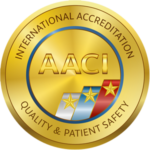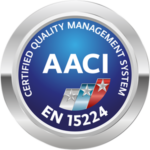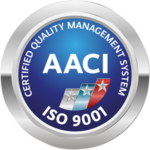Neurosurgical activity was developed primarily in the area of surgical treatment of the spine, peripheral nerve surgery and the introduction of a whole series of minimal spinal procedures for the treatment of painful conditions of the spine.
Over the past years, neurosurgery has been developing both professionally and technologically. In addition to standard neurosurgical procedures, the latest advances are the introduction of endoscopic procedures on the spine, as well as the beginning of the treatment of degenerative intervertebral disc disease with stem cells. As part of a wider scientific project, this treatment was recognized and partially financed by EU funds.
Advantages of spine treatment in the Specialty Hospital Medico
Following the motto of the Specialty Hospital Medico “In one day in one place”, the goal of the neurosurgical team is to provide patients with fast processing and quality treatment. The advantages of treatment at the Specialty Hospital Medico is the availability of treatment, which primarily includes a neurosurgical examination, medical evaluation and, after defining the diagnosis, making a decision on treatment.
Two neurosurgeons with many years of experience and continuous education in the field of surgical treatment of the spine are permanently employed in the institution. The processing in our hospital begins with a reservation for an outpatient examination. For patients who need further treatment, it usually continues with magnetic resonance imaging and, if necessary, X-ray imaging. The radiology team uses a modern device to obtain high-quality image material in a short time. Often, the treatment is extended to neurophysiological treatment that is under the auspices of a team of excellent neurologists and specialized nurses at the Medico Special Hospital. When making a decision about active neurosurgical treatment, whether it is surgical treatment or a specific spinal procedure, it continues in the premises of modernly equipped operating rooms and comfortable accommodation in the hospital ward. The patient is then cared for by teams of nurses, technicians and doctors from the aforementioned units, with the possibility of laboratory (pre-operative) diagnostics in a modern medical-biotechnical laboratory, as well as the support of the anaesthesiology service of permanently employed anaesthesiologists and anesthesiology technicians who look after the patient before, during and immediately after the surgical procedure.
With the described method of organization and equipment, at the Specialty Hospital Medico we provide our patients a high-quality surgical treatment of spine diseases without much waiting time.
Surgical treatment of the spine in the Specialty Hospital Medico
Patients have at their disposal a modernly equipped operating room with a trained operating room team and comfortable accommodation in the hospital ward. The operating room is equipped with a modern operating table intended for use in operating rooms where an X-ray device is used during the procedure. The basic equipment is complemented by a new and modern X-ray device that allows the operation to be performed in a safe and controlled manner while avoiding a larger exposure of the patient to ionizing radiation. As a large number of neurosurgical procedures on the spine are performed using microsurgical techniques, the operators also have at their disposal an operating neurosurgical microscope from a leading manufacturer. Endoscopic operations on the spine are performed using the latest generation endoscopy pole and instruments. The hall is also equipped with a modern anesthesiology device as well as a room for preparing and waking up the patient.
The hospital ward is equipped with comfortable single and double-bed patient rooms. Each patient room is equipped with a bathroom, TV and air conditioning. Family members may visit the patient throughout the day with prior notice. A great advantage of treatment at theSpecialty Hospital Medico is the organization of the permanent presence of nurses and doctors (24-hour presence of doctors) during your stay in the hospital ward.
The Most Common Surgical Procedures of the Spine
HERNIATED INTERVERTEBRAL DISC
(“Herniated disc”) The herniated intervertebral disc operation is one of the most common surgical procedures on the spine.
As a result of ageing or greater load on the spine, there is damage to the disc (intervertebral ligamentous structure) and consequent pressure on the nerve structures.
This event often causes intense pain in the back and leg and often requires surgical treatment.
The operation is performed using a minimally invasive, microsurgical technique using a tubular retractor and an operating microscope.
The procedure is usually performed under general anaesthesia. Patients usually leave the hospital the next day.
NARROWING OF THE SPINAL CANAL (SPINAL STENOSIS)
The treatment of spinal stenosis is an operation that is most often performed on elderly people in whom, due to degenerative changes of ageing, there is a narrowing of the canal in which the spinal cord is located, as well as the canal through which the nerves of the spinal cord pass. Patients then suffer from chronic back pain as well as progressive walking restrictions. The aim of the operation is to remove thickened ligaments and bone structures that cause the narrowing. Since, in addition to freeing the nerve structures during the operation, it is necessary to preserve the dynamic relationships of the spine, the operation is also most often performed using a minimally invasive microsurgical technique. The procedure is usually performed under general anaesthesia. Patients usually leave the hospital the next day.
- Treatment of spinal stenosis and spinal deformity by decompression and instrumentation More serious degenerative changes of the spine sometimes include, in addition to damage to the intervertebral discs and spinal stenosis, deformities and instability of the spine. In addition to the release of nerve structures (spinal cord, spinal nerves), the surgical procedure also requires the installation of instrumentation. These are screws that are installed in the vertebra and connected longitudinally (vertebrosynthesis). The vertebrae also connect with each other (spondylodeza). For instrumentation, we use implants from a top manufacturer. The procedure is performed under general anaesthesia. Patients are then treated in hospital for 3-5 days.
- Endoscopic surgery of a herniated intervertebral disc (selective endoscopic dysectomy) Endoscopic spinal surgery is a relatively new method of treating intervertebral disc herniation using an endoscope. In addition to the main goal of removing the degenerated disc tissue that puts pressure on the spinal nerve, the method has a number of advantages based on less invasiveness. The main advantage is less tissue destruction during the procedure, since only the skin is cut, and the patient’s recovery is faster. Also, the procedure is often completed with thermal annuloplasty, which reduces the occurrence of painful back conditions after the procedure. The procedure is usually performed under general anaesthesia. Patients usually leave the hospital the next day.
Most Common Spinal Procedures
EPIDURAL STEROID INJECTION
In patients suffering from back pain and leg pain associated with changes in the spine, treatment with epidural steroid injection is considered. It is a procedure in which a combination of drugs (corticosteroid and local anaesthetic) is injected into the canal around the spinal cord and nerves. The aim of the procedure is to reduce nerve inflammation and pain. The procedure is performed under local anaesthesia under the control of an X-ray device and a contrast medium. Patients usually leave the hospital within an hour after the procedure is performed.
TRANSFORAMINAL STEROID INJECTION
Transforaminal steroid injection is a variant of epidural steroid injection during which drugs (corticosteroid and local anaesthetic) are injected in the projection of the exit of the nerve from the spine. This procedure is used in patients who have a pronounced radiculopathy (“sciatica”) in the clinical picture. The aim of the procedure is to reduce nerve inflammation and pain. The procedure is performed under local anaesthesia under the control of an X-ray device and a contrast medium. Patients usually leave the hospital within an hour after the procedure is performed.
BLOCKAGE OF THE FACET JOINTS
This spinal procedure is applied in patients in whom, during the clinical examination and inspection of the imaging documentation, changes in the facet joints (zygapophysial joints) have been recognized as the origin of the back pain. The procedure is performed under local anaesthesia under the control of an X-ray device and a contrast medium. The goal of the procedure is to reduce back pain. Patients usually leave the hospital within an hour after the procedure is performed.
BLOCKAGE OF THE SACRIO-ILIACAL JOINTS
The sacro-iliac joint (SI joint) is a joint that connects the cross bone (axis sacrum) and pelvis (axis ilium). It is believed that for every fifth patient who suffers from back pain the cause of the pain is in the SI joint. It is more common in the older population. The goal of the procedure is to inject medicine into the joint itself through a thin needle. The procedure is performed under the control of an X-ray device and a contrast medium. The goal of the procedure is to reduce back pain. Patients usually leave the hospital within an hour after the procedure is performed.
VERTEBROPLASTY
In patients suffering from back pain as a result of vertebral fractures (most often due to osteoporosis), vertebroplasty is used as a treatment method. Vertebroplasty is a procedure during which special needles are inserted into a fractured vertebra under local or general anaesthesia under the control of an X-ray device. Medical cement (PMMA-polymethyl methacrylate) is then injected into the vertebra itself. Cement acts like a thick liquid that quickly hardens into the spine. The primary goal of the procedure is to eliminate the pain. Patients leave the hospital the next day.



